
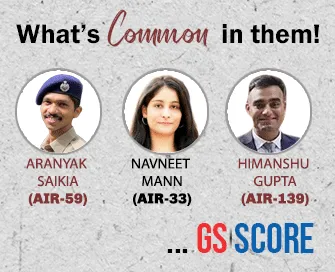
18th July 2025 (14 Topics)
Mains Issues
Context:
The Government of India has completed five years of implementation of the National Education Policy 2020, marking substantial progress in curriculum reforms, digital integration, teacher training, and equitable access to quality education.
Historical Context and Rationale
- Legacy of Colonial System: The British education model was designed to create clerks, not innovators. It was job-centric and not skill-oriented.
- Need for Reform: Post-independence, minor changes were made, but a comprehensive restructuring was missing.
- NEP 2020 was envisioned to address these systemic gaps and align Indian education with 21st-century needs.
Vision and Objectives of NEP 2020
- Practical & Skill-based Education: Move away from rote learning.
- Holistic Development: Build value-based, tech-savvy, and globally competitive citizens.
- Inclusive Access: Bridge rural-urban, gender, and socio-economic divides.
- Public Investment Target: Increase spending to 6% of GDP.
School Education Reforms
- Structural Reform: 5+3+3+4 Curriculum
- Foundation: 3–8 years
- Preparatory: 8–11 years
- Middle: 11–14 years
- Secondary: 14–18 years
- Curriculum and Pedagogy Modernization
- NCERT's National Curriculum Framework introduced.
- Bal Vatika, VidyaPravesh, and JaaduiPitara for early childhood care.
- CBSE introduced subjects like AI, Design Thinking, Data Science.
- Syllabus reduction to reduce student burden.
- Assessment Reform
- CBSE Class 10 board exams to be conducted twice a year from 2026.
- Introduction of formative assessments and internal assessments.
- Skill Development in Schools
- Skill modules introduced in Classes 9–12.
- 138 skill job roles approved till 2025.
- Vocational education expanded: From 1,850 (2014–15) to 29,342 schools (2024–25).
Higher Education Reforms
- Curriculum and Credit Reforms
- National Higher Education Qualification Framework (NHEQF)
- Multiple Entry-Exit System, Academic Bank of Credits
- PM Vidya Lakshmi for financial aid
- 40% credit transfer through SWAYAM
- Institutional Expansion
- 7 new IITs, 8 IIMs, 13 AIIMS, 354 Eklavya Schools
- MBBS seats nearly doubled in a decade
- 2014: 54,348 seats | 2025: 1,18,190 seats
- Digital Education Ecosystem
- Diksha, SwayamPrabha, PM e-Vidya, e-Pathshala
- Content in 126 Indian and 7 foreign languages
- Over 25,000 hours of broadcast in 29 languages
- Teacher Training and Governance
- NISHTHA 3.0 for teacher training
- Over 26 lakh master trainers trained
- SAMARTH: Digital governance for Higher Education Institutions (HEIs)
Foundational Literacy and Numeracy
- NIPUN Bharat: Basic literacy and numeracy by Class 2
- Integrated with SamagraShiksha 2.0 (till 2025–26)
Global Recognition and Rankings
- QS World University Rankings (2026):
- Indian institutions included: 54 (2015: only 11)
- 8 new Indian universities entered for the first time
- IIT Delhi ranked 123rd globally
Challenges
- Implementation gaps at state level
- Digital divide in rural and tribal regions
- Teacher shortages and uneven quality of training
- Alignment of voctional education with employability
Way Forward
- Strengthen decentralised capacity-building at the state and district levels
- Foster public-private partnerships for infrastructure and skilling
- Ensure inclusivity for differently-abled and disadvantaged groups
- Establish strong monitoring and feedback mechanisms
- Promote research and innovation through increased funding and autonomy to institutions


Prelims Articles
Context:
On July 17, 2025, the Madras High Court directed state authorities to ensure that Scheduled Caste (SC) devotees are not barred from entering the PuthukudiAyyanar Temple in Tamil Nadu, invoking constitutional and statutory provisions against caste-based discrimination.
Constitutional Provisions Involved:
- Article 15(2): Prohibits discrimination on grounds of religion, race, caste, sex, or place of birth in access to public places.
- Article 17: Abolishes "untouchability" and forbids its practice in any form.
- Article 25(2)(b): Empowers the State to make laws for social welfare and reform, enabling all classes of Hindus to enter and worship in Hindu religious institutions.
Statutory Provision:
- Tamil Nadu Temple Entry Authorization Act, 1947:
- Section 3 affirms that any Hindu, regardless of caste or sect, has the right to enter and worship in Hindu temples.
- Overrides any custom, usage, or local law denying access based on caste.
- Provides for legal action against individuals or groups who obstruct such entry.
Judicial Intervention:
- The High Court explicitly recognized caste-based denial of temple entry as an “actionable wrong/offence.”
- Directed both the Ariyalur Superintendent of Police and Revenue Divisional Officer to enforce the rights of Scheduled Caste worshippers and maintain public order.
Recent Precedent Cases:
- Several similar cases in Tamil Nadu, including Dalit temple entry in Tiruvannamalai (2024) after 70 years, indicate a recurring pattern of caste discrimination despite legal safeguards.
Broader Socio-legal Relevance:
- Reflects continuing challenges in enforcing constitutional morality over social orthodoxy.

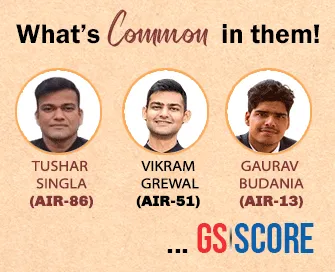
Prelims Articles
Context:
Tripura has been officially declared a fully literate state under the Ullas–Nav Bharat SakshartaKaryakram, achieving a literacy rate of 95.6% as per NEP 2020 benchmarks.
Tripura's Milestone Achievement
- Tripura is the third state in India, after Goa and Mizoram, to be recognised as fully literate under national standards.
- The benchmark is 95% literacy among individuals aged 15 years and above.
- Tripura's literacy rate improved from 24% in 1961 to 95.6% in 2024.
Role of Ullas – Nav Bharat SakshartaKaryakram
- Implemented under the National Education Policy (NEP) 2020, the Ullas scheme targets non-literate youth and adults aged 15 and above.
- It focuses on foundational literacy and numeracy, life skills, and basic education for all.
- The scheme is part of a digital and volunteer-driven literacy movement, ensuring inclusive learning access.
Wider Policy Implications and Link to NEP 2020
- NEP 2020 promotes lifelong learning and adult education as key components.
- The literacy drive supports the goal of achieving universal foundational literacy by 2025.
- The programme strengthens India’s commitment to SDG 4 (Quality Education) by ensuring equitable access to education at all ages.


Prelims Articles
Context:
Anganwadi workers in Haryana are facing technical challenges in registering pregnant and lactating women on the Poshan Tracker app, delaying access to nutritional benefits under the PoshanAbhiyaan scheme.
Poshan Tracker App:
- Developed by the Union Ministry of Women and Child Development (MWCD), the Poshan Tracker is a real-time digital tool for monitoring service delivery and nutritional outcomes under the PoshanAbhiyaan (launched in 2018).
- It mandates facial recognition and Aadhaar e-KYC for authentication of beneficiaries, including children through guardians’ Aadhaar.
Role of Anganwadi Workers:
- Anganwadi workers are frontline service providers under the Integrated Child Development Services (ICDS).
- Their duties include registering beneficiaries, ensuring nutrition supplementation, immunisation, and pre-school education.
Implementation Challenges:
- Facial recognition failure due to technical glitches, poor camera alignment, or inadequate lighting conditions.
- Mismatch in Aadhaar details, including name spelling errors, prevents successful registration.
- Digital illiteracy among some workers and limited training in smartphone and app usage.
- Internet connectivity issues in rural areas impede real-time data syncing and authentication.
- Mobile ownership gender gap: As per MoSPI’s 2025 Telecom Survey, only 2% of rural women in Haryana own a mobile phone, compared to 94% of rural men. This gendered digital divide restricts independent access to mobile-based services.
Governance Implication:
- While digital systems are introduced to ensure transparency, accountability, and timely service delivery, inadequate infrastructure and human capacity at the grassroots level can lead to exclusion of genuine beneficiaries, undermining the scheme’s intent.
|
PoshanAbhiyan :
Key Objectives
Strategic Pillars
Poshan 2.0 / Mission SakshamAnganwadi
|

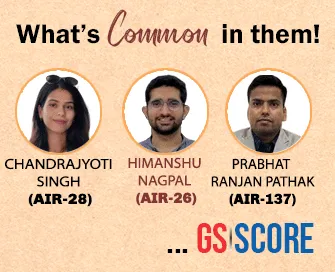
Prelims Articles
Context:
India has formally objected to a U.S. Bill proposing 500% tariffs on countries importing Russian oil, warning against selective enforcement of sanctions while the EU continues to procure Russian energy in various forms.
Proposed U.S. Legislation: Russian Sanctions Act, 2025
- Seeks to impose up to 500% ad valorem duties on countries involved in the trade of:
- Russian-origin oil, gas, petroleum products, petrochemicals, and uranium.
- The law includes a waiver provision allowing deferment of tariffs for six months but recommends early implementation.
India’s Position
- India emphasizes its right to secure energy needs based on market availability and economic imperatives.
- Reiterates that energy security is a national priority, especially for a large and developing economy.
- India has diversified oil imports, now sourcing from over 40 countries, up from 27 previously.
Diplomatic and Trade Implications
- The issue arises amid India–U.S. talks on a ‘mini’ trade agreement focused on:
- Tariff reduction
- Agricultural and dairy access
- Entry of genetically modified goods
- India is also coordinating with the U.S. on matters related to immigration enforcement, including the deportation of Indian nationals.


Prelims Articles
Context:
Indore has secured the first position for the eighth consecutive year in the SwachhSurvekshan 2024–25, reaffirming its leadership in urban cleanliness and waste management practices.
SwachhSurvekshan Overview:
- It is an annual cleanliness survey conducted by the Ministry of Housing and Urban Affairs under the Swachh Bharat Mission (Urban).
- The 2024–25 edition was the ninth in the series and assessed 4,500+ cities based on 10 parameters and 54 indicators.
- The survey is considered the world’s largest urban sanitation assessment and has seen participation from over 14 crore citizens.
Survey Theme:
- The overarching theme was “Reduce, Reuse, Recycle”, aligning with India’s broader objectives of sustainable urban development.
Performance Highlights:
- Indore topped the national rankings for the eighth consecutive year.
- Surat and Navi Mumbai secured second and third places respectively.
- In the 3–10 lakh population category, Noida ranked first, followed by Chandigarh and Mysuru.
Super Swachh League (New Initiative):
- Introduced to honour cities consistently in the top three positions over the past three years and still within the top 20% of their population category.
- Indore not only led this elite league but also received the highest marks among all 23 cities in this category.
- Ujjain and Budhni were also recognised under their respective population categories.
Population-Based Classification (First-Time Introduction):
- Cities were divided into five population categories:
- Very Small, Small, Medium, Big, and Million-plus.
- This structure allowed more equitable evaluation and comparison among similar-sized urban areas, enabling recognition of cities like Panchgani, Saswad, Tirupati, etc.
Methodology & Inclusivity:
- More than 3,000 assessors were deployed over 45 days.
- The survey covered every municipal ward and involved inspection of over 11 lakh households.
- Assessment parameters included sanitation infrastructure, waste processing, citizen feedback, and service delivery efficiency.
Swachh Bharat Mission (Urban):
- Launched in October 2014, it aims to achieve 100% open defecation-free status and scientific solid waste management in all statutory towns.
- SwachhSurvekshan functions as a key monitoring and incentivising mechanism under this flagship mission.

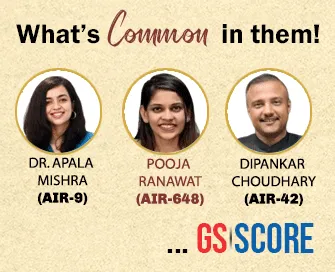
Prelims Articles
Context:
China installed more wind turbines and solar panels in 2024 than the rest of the world combined, marking a pivotal moment in global renewable energy leadership.
China’s Renewable Energy Investment (2024):
- Total investment: $940 billion in 2024 (Carbon Brief).
- This investment surpasses all other nations combined in renewable energy infrastructure additions.
- From $10.7 billion in 2006, this reflects exponential state-backed growth.
Key Raw Material Control:
- China controls global supply chains of critical minerals such as:
- Polysilicon (for solar panels) and Lithium (for batteries)
- This dominance is a result of long-term extraction agreements and technological upgradation in refining processes.
Manufacturing Dominance:
- China leads in:
- Solar panel production (e.g., Longi Green Energy)
- Wind turbine production (e.g., Goldwind)
- Battery manufacturing (e.g., CATL – Contemporary Amperex Technology Co. Limited)
Strategic State Planning:
- Institutional support through:
- Renewable Energy Law (2005) — Ensured price guarantees and grid access.
- 11th Five-Year Plan (2006–2010) — Elevated renewables as a national strategic priority.
- Massive support through SOEs (State-Owned Enterprises) like State Grid Corporation, Huaneng, and Genertec.
- Execution coordinated by National Development and Reform Commission (NDRC) and National Energy Administration (NEA).
Technological Advancements and Global Outreach:
- China is investing in:
- AI-powered smart grids
- Green hydrogen
- Thorium-based nuclear reactors
- Belt and Road Initiative (BRI) also supports green infrastructure in Africa, Latin America, and South Asia, cementing China’s energy diplomacy.
Transmission Infrastructure & Integration:
- Faced curtailment challenges in provinces like Inner Mongolia due to poor grid absorption capacity.
- Response: Investment in Ultra-High Voltage (UHV) transmission lines, with State Grid doubling its investment to $88.7 billion in 2024.
|
India Non-Fossil Fuel Power Capacity Installed Capacity vs Actual Generation:
Components of Non-Fossil Fuel Sources:
Grid Limitations & Storage Challenges:
Policy Solutions & Way Forward:
|


Prelims Articles
Context:
China installed more wind turbines and solar panels in 2024 than the rest of the world combined, marking a pivotal moment in global renewable energy leadership.
China’s Renewable Energy Investment (2024):
- Total investment: $940 billion in 2024 (Carbon Brief).
- This investment surpasses all other nations combined in renewable energy infrastructure additions.
- From $10.7 billion in 2006, this reflects exponential state-backed growth.
Key Raw Material Control:
- China controls global supply chains of critical minerals such as:
- Polysilicon (for solar panels) and Lithium (for batteries)
- This dominance is a result of long-term extraction agreements and technological upgradation in refining processes.
Manufacturing Dominance:
- China leads in:
- Solar panel production (e.g., Longi Green Energy)
- Wind turbine production (e.g., Goldwind)
- Battery manufacturing (e.g., CATL – Contemporary Amperex Technology Co. Limited)
Strategic State Planning:
- Institutional support through:
- Renewable Energy Law (2005) — Ensured price guarantees and grid access.
- 11th Five-Year Plan (2006–2010) — Elevated renewables as a national strategic priority.
- Massive support through SOEs (State-Owned Enterprises) like State Grid Corporation, Huaneng, and Genertec.
- Execution coordinated by National Development and Reform Commission (NDRC) and National Energy Administration (NEA).
Technological Advancements and Global Outreach:
- China is investing in:
- AI-powered smart grids
- Green hydrogen
- Thorium-based nuclear reactors
- Belt and Road Initiative (BRI) also supports green infrastructure in Africa, Latin America, and South Asia, cementing China’s energy diplomacy.
Transmission Infrastructure & Integration:
- Faced curtailment challenges in provinces like Inner Mongolia due to poor grid absorption capacity.
- Response: Investment in Ultra-High Voltage (UHV) transmission lines, with State Grid doubling its investment to $88.7 billion in 2024.
|
India Non-Fossil Fuel Power Capacity Installed Capacity vs Actual Generation:
Components of Non-Fossil Fuel Sources:
Grid Limitations & Storage Challenges:
Policy Solutions & Way Forward:
|


Prelims Articles
Context:
The Indian Army and DRDO successfully conducted high-altitude trials of the indigenously developed Akash Prime air defence system in Ladakh, while Prithvi-II and Agni-I ballistic missiles were test-fired from Chandipur.
Akash Prime:
- It is an upgraded version of the Akash surface-to-air missile (SAM) system.
- It is designed to engage aerial targets such as aircraft, helicopters, UAVs, and cruise missiles at medium range.
- The recent trials at over 15,000 feet in Ladakh successfully demonstrated its high-altitude operational capability with direct hits on fast-moving aerial targets.
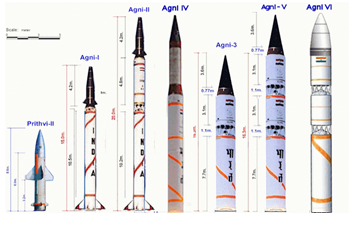
Indigenisation and DRDO Role:
- The system is developed by DRDO and is part of India’s broader efforts to enhance indigenous defence manufacturing under initiatives like Atmanirbhar Bharat in defence.
Strategic Ballistic Missiles (Agni-I &Prithvi-II):
- Agni-I: A short-range ballistic missile (SRBM) with a range of ~700 km, capable of carrying nuclear warheads. It is road/rail mobile and developed under the Integrated Guided Missile Development Programme (IGMDP).
- Prithvi-II: Also part of IGMDP, it has a range of ~250–350 km and is a short-range ballistic missile using liquid propulsion. It is primarily used by the Indian Army.
Strategic Forces Command (SFC):
- The SFC is responsible for the management and administration of India’s nuclear arsenal and conducted these tests to validate operational readiness.
Significance for India’s Strategic Deterrence:
- These successful trials enhance India's layered air defence and strengthen its strategic deterrent posture.


Prelims Articles
Context:
On July 16, 2025, scientists at the Large Hadron Collider (LHC) reported the first-ever observation of CP violation in baryons — specifically in the ?b? baryon — potentially offering new insights into the matter-antimatter asymmetry of the universe.
What is the Matter–Antimatter Asymmetry Problem?
- The Big Bang is believed to have created equal amounts of matter and antimatter. However, the observable universe is overwhelmingly matter-dominated, with almost no free antimatter present.
- This imbalance contradicts expectations from standard cosmological models and indicates unknown physical processes at play.
What is CP Violation and Why is It Important?
- CP (Charge-Parity) symmetry implies that the laws of physics should remain unchanged if a particle is replaced with its antiparticle (C) and left and right are reversed (P).
- CP violation refers to the breakdown of this symmetry and is essential for explaining why matter could dominate over antimatter in the early universe.
- While CP violation has been seen before in mesons (quark-antiquark pairs), this is the first observation in baryons, which are three-quark particles like protons and neutrons.
What Did the LHCb Detector Discover?
- The ?b? baryon, composed of an up, down, and bottom quark, was studied along with its antiparticle ?b?-bar.
- The LHCb team measured how these baryons decay into specific final states (proton, kaons, and pions).
- A CP asymmetry of 2.45% was observed with 2 sigma significance, exceeding the 5? threshold required for discovery in particle physics.
- The detection relied on billions of proton-proton collisions, machine learning algorithms, and statistical techniques to eliminate background effects.
Why Is This Discovery Important?
- This finding confirms that baryons can exhibit CP violation, expanding the domain of such violations beyond mesons.
- Though the amount of CP violation found is still too small to fully explain the matter-antimatter imbalance, it opens new experimental avenues to search for unknown particles or forces.
- It also highlights the importance of precision experiments at high-energy colliders like the LHC in probing fundamental questions of cosmology and particle physics.


Prelims Articles
Context:
A clinical trial published in The New England Journal of Medicine in June 2025 demonstrated promising results of zimislecel, a stem cell-derived islet cell therapy, in restoring insulin production in patients with severe Type 1 diabetes.
Type 1 Diabetes Mechanism:
- An autoimmune condition in which the body’s immune system attacks pancreatic islet cells (beta cells), which produce insulin.
- Leads to an absolute deficiency of insulin, requiring lifelong external administration.
Current Management Limitations:
- Despite technological advancements like insulin pumps and continuous glucose monitoring (CGM), around 75% of patients fail to achieve glycaemic targets.
- Severe hypoglycaemic episodes and the inability to mimic the natural insulin rhythm remain major challenges.
Zimislecel Therapy – Innovation:
- A stem cell-based treatment wherein lab-grown pluripotent stem cells are differentiated into functional insulin-producing islet cells.
- These are infused into the hepatic portal vein, where they localise in the liver and begin insulin secretion.
- Therapy avoids reliance on deceased donor organs and complex extraction techniques.
Trial Results:
- Conducted on 12 patients with >20 years of Type 1 diabetes and recurrent severe hypoglycaemia.
- All participants exhibited C-peptide production within 90 days, indicating endogenous insulin synthesis.
- Improvements in glycaemic control were recorded over a 1-year period.


Editorials
Context:
The Election Commission of India (ECI) has launched a Special Intensive Revision (SIR) of electoral rolls in Bihar, leading to legal and public scrutiny over its objectives, execution, and potential implications for voter disenfranchisement.
Institutional Credibility vs Public Distrust
- Historic Legacy of Competence: The ECI has consistently demonstrated administrative excellence—from preparing the first electoral rolls post-independence to managing nationwide elections involving over 8 crore electors and 18 lakh officials.
- Erosion of Public Confidence: Despite its institutional repute, the recent SIR has provoked skepticism from civil society and political stakeholders who allege that the exercise may lead to mass disenfranchisement.
- Perceived Judicial Overreach: Judicial inquiries, arising from apprehensions about the process, have added to the pressure, compelling the ECI to justify its operational intent and procedural fairness before the higher judiciary.
Operational Adjustments and Ambiguities
- Relaxation of Documentation Norms: The ECI permitted the use of 2003 electoral roll entries of parents as a basis for eligibility and allowed enumeration forms without prescribed documents, reflecting an attempt to simplify compliance.
- Inconsistency in Verification Protocols: The role of Booth Level Officers (BLOs) remains unclear, particularly regarding their authority to “recommend” inclusion without proper documentary evidence.
- Potential Redundancy of Citizenship Proof: Suggestions to consider Aadhaar, EPIC, and ration cards shift the focus from citizenship verification to identity confirmation, thereby diluting the intended legal rigor of the SIR.
Philosophical, Legal, and Governance Dilemmas
- Unresolved Question of Authority: The ECI, though robust in electoral management, is not legally designated under the Citizenship Act to determine citizenship status, raising fundamental questions of jurisdiction.
- Measurement of Success Remains Subjective: It is uncertain whether success will be assessed by the volume of submitted forms, exclusion of ineligible voters, or public trust restored, leaving the institutional goal ambiguous.
- Democratic Ethos at Stake: The foundational principle of universal adult franchise demands utmost caution; any process leading to arbitrary exclusion without due legal process may undermine constitutional democracy.
Practice Question:
The Election Commission of India is admired for its electoral management but not empowered for citizenship determination. In light of the recent electoral roll revision in Bihar, critically analyse the constitutional and legal limits of ECI’s mandate and the implications for democratic governance. (250 words)


Editorials
Context:
The return of Group Captain Shubanshu Shukla from the Axiom-4 mission to the International Space Station (ISS) marks India’s first crewed commercial spaceflight, signaling a milestone in its human spaceflight programme.
Strategic Milestones and National Implications
- First Indian on Commercial Mission: Group Captain Shubanshu Shukla’s participation in the Axiom-4 mission represents the first instance of an Indian serving on a commercial human spaceflight, symbolizing India’s deepening role in global crewed space exploration.
- Technological and Operational Validation: The mission underscores India’s potential in adapting to rigorous international space standards and validates the reliability of private-sector space transportation in complex scientific missions.
- Catalyst for Indigenous Human Spaceflight Programme: By learning from international collaboration, especially through Axiom’s methodologies and logistics, India strengthens its roadmap for the Gaganyaan mission and future low-Earth orbit (LEO) missions.
Key Learnings from Axiom-4 and Global Synergies
- Crew Training and Preparedness: Axiom-4 offers critical insights into multidisciplinary crew training involving non-career military professionals, thereby expanding the scope of future Indian astronaut profiles.
- Adaptation to Long-Duration Missions: The mission highlights methods to manage microgravity-induced physiological changes, psychological conditioning, and real-time problem-solving essential for India’s human spaceflight ambitions.
- Operational and Logistical Expertise: Exposure to advanced launch sequencing, pre-mission simulations, and integration with international modules improves ISRO’s mission management capacities.
Future Outlook and India’s Strategic Positioning
- Commercial Collaboration and Innovation: Axiom Space’s aim to replace the ISS with a commercial space station aligns with India’s aspirations under the BharatiyaAntariksh Mission, offering avenues for private-sector partnerships.
- Evolving ISRO’s Role in Deep Space Exploration: The Gaganyaan project, supported by Indian private firms and global companies like SpaceX and Blue Origin, is expected to evolve into a broader programme involving Moon bases and low-Earth orbit infrastructure.
- Strategic Autonomy in Human Spaceflight: While leveraging global cooperation, India aims to secure long-term strategic autonomy through indigenous space technology, sustainable astronaut training, and eventual independent orbital platforms.
Practice Question:
"Discuss how the Axiom-4 mission has influenced India’s strategic preparedness for long-duration human spaceflight. In youranswer, evaluate the significance of international collaboration, crew training, and commercial partnerships for India's space programme." (250 words)


Editorials
Context:
On June 16, 2025, the Lieutenant Governor of Jammu & Kashmir reiterated the government’s top priority of eradicating terrorism and emphasized the role of the J&K Police (JAKP) in leveraging modern technology and community engagement for enhancing internal security.
Operational Role of JAKP in Counter-Terrorism
- Primacy of Local Forces: The J&K Police, with its intimate knowledge of terrain and demography, possesses a strategic advantage over central forces, enabling precise counter-terror operations.
- Gaps in Human Intelligence (HUMINT): Recent incidents, such as the Pahalgam attack, expose shortcomings in HUMINT, underscoring the need to strengthen local intelligence collection mechanisms.
- Technology and Inter-Agency Collaboration: Adoption of modern surveillance tools and coordinated functioning with intelligence agencies are essential to build a robust, multilayered counter-terror framework.
Importance of Elected Representatives in Security Architecture
- Democratic Participation in Security: Locals are more likely to share sensitive information with their elected representatives, making them integral to the region’s security matrix.
- Devolution of Power to Improve Accountability: Placing JAKP under the elected government will enhance responsiveness, accountability, and alignment with the community’s aspirations.
- Consequences of Exclusion: Marginalisation of elected bodies may result in political indifference and alienation among citizens, weakening grassroots-level vigilance and community-based policing.
Institutional Reforms for Sustainable Peace
- Restoring Democratic Structures: Empowering all tiers of governance—from panchayats to Members of Parliament—can rejuvenate participatory security and administrative processes in J&K.
- Integrated Policing through Local Engagement: Structured dialogue between police forces and community leaders can enhance intelligence-gathering, promote trust, and improve public safety initiatives.
- Context-Specific Counter-Terrorism Models: Given the heterogeneous nature of terrorism across J&K sub-regions, decentralised and localised policing strategies are more effective than uniform, centralised approaches.
Practice Question:
"Discuss the significance of local policing and democratic participation in counter-terrorism strategies with reference to Jammu & Kashmir. How can integrating elected representatives into the security framework enhance grassroots intelligence and public trust?" (250 words)




